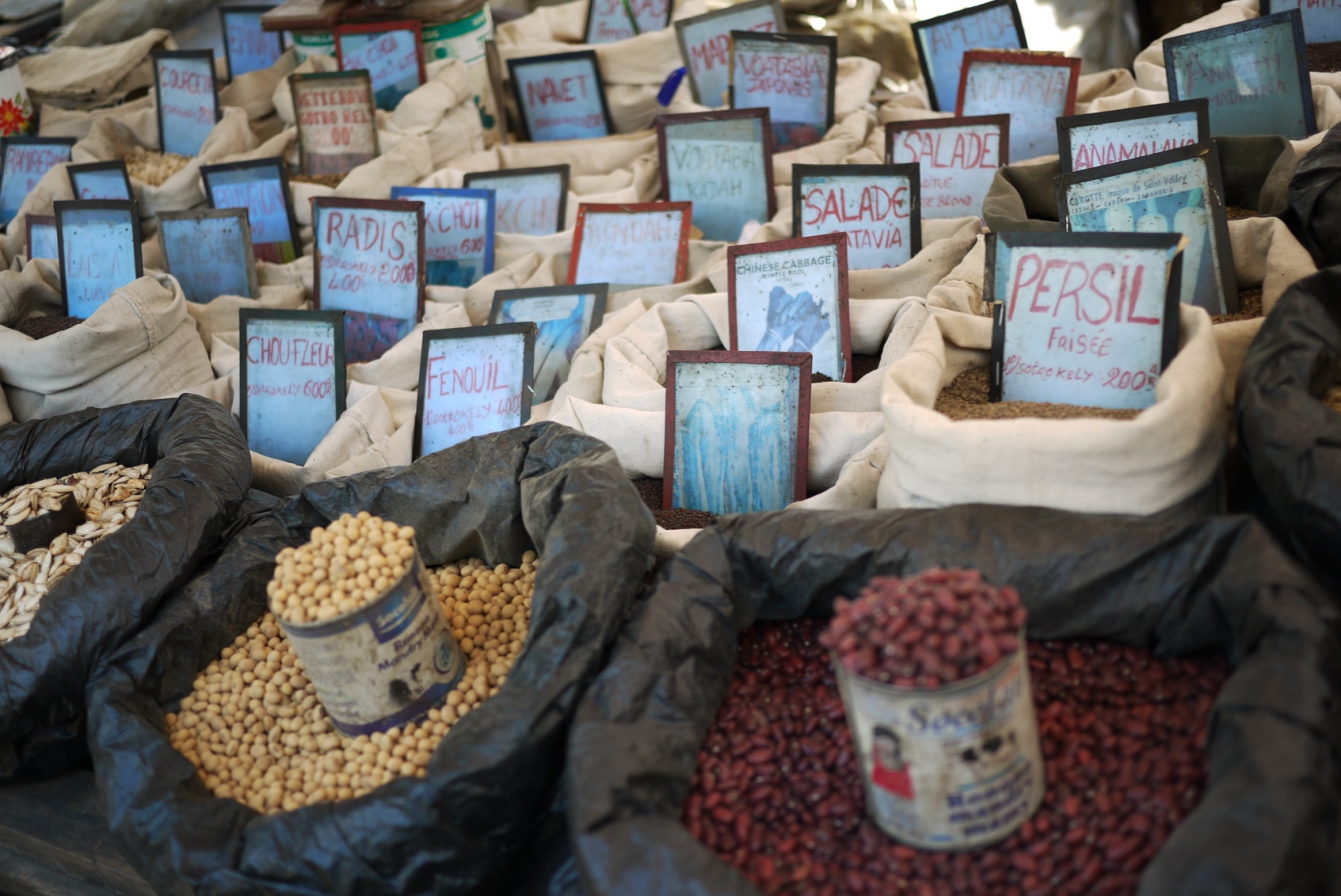
The Madagascar Ethnobotany Program is based on the premise that working with local people is the most effective way to conserve biodiversity-rich areas sustainably. By integrating ethnobotanical data into conservation plans, we collaborate with communities to develop a program that will not only protect and replenish the ecosystem but agree with their daily lives and cultural practices.
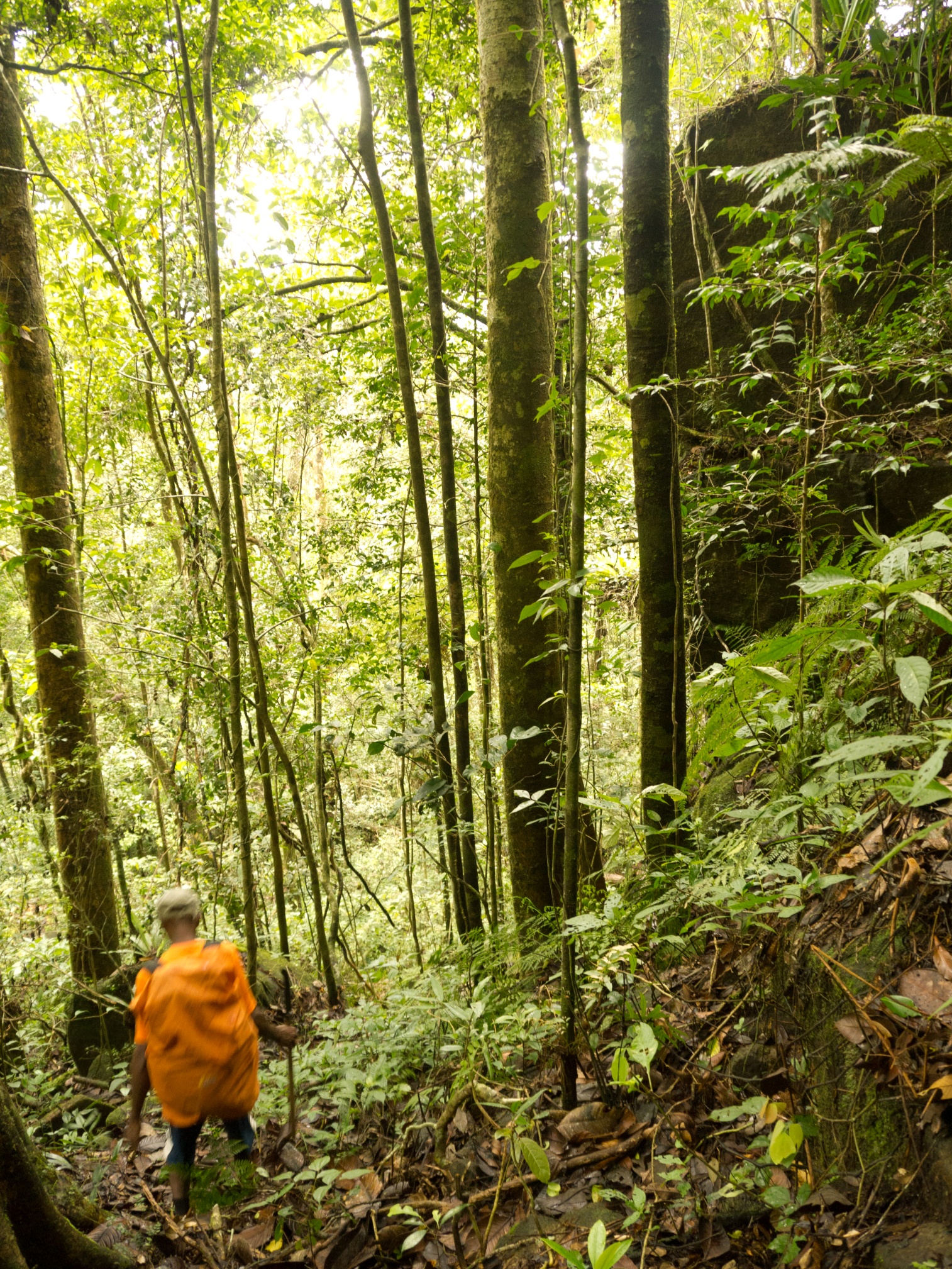
The William L. Brown Center has been active in community based conservation in Madagascar since 2004. Our pioneer site for the Ethnobotany Program is the community of Ambalabe and the surrounding Vohibe Forest in eastern Madagascar. In 2010, we started working in our second site, Analavelona Sacred Forest in southwestern Madagascar.
Our Ethnobotany Program is rooted in four components:
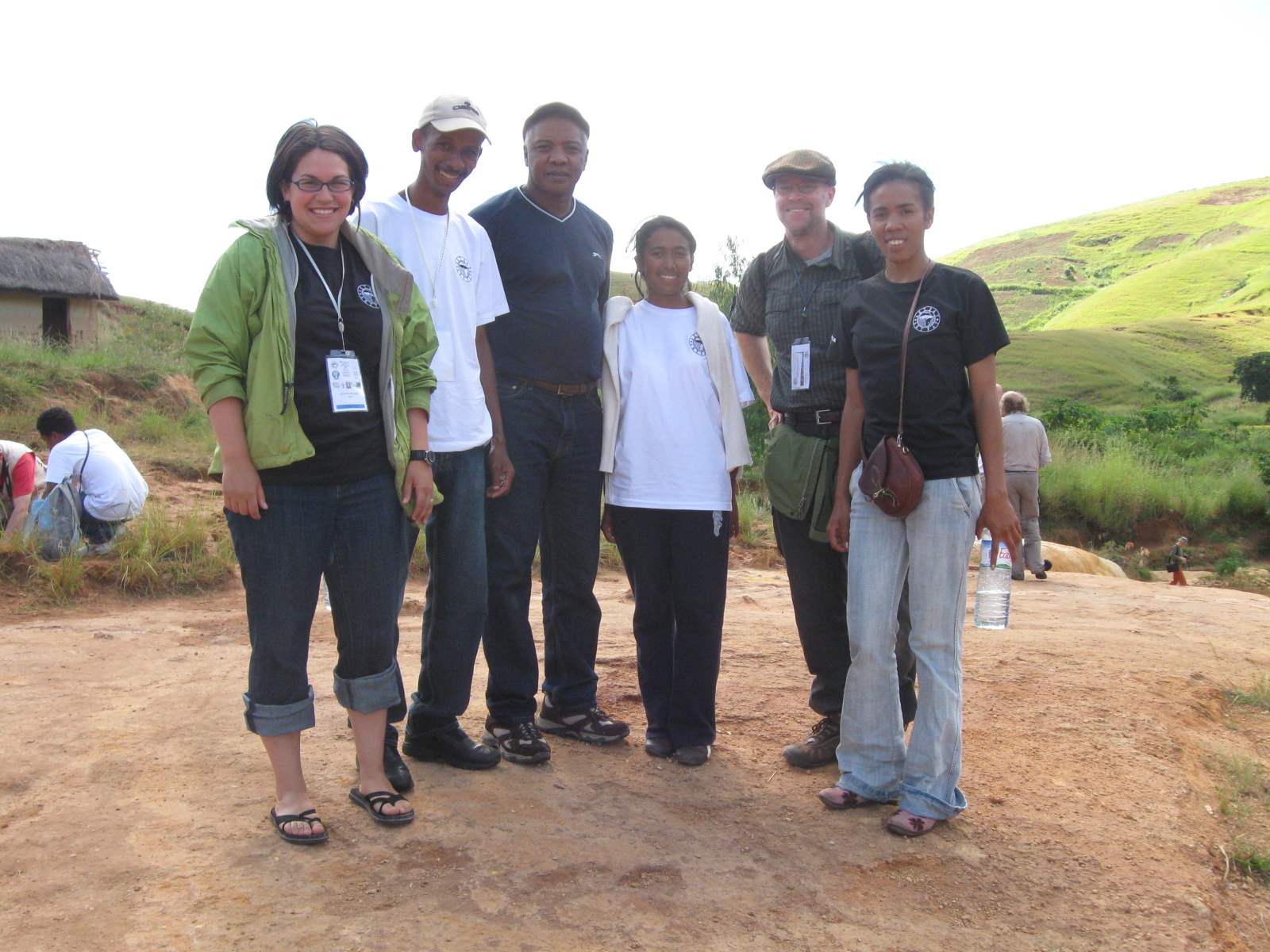
WLBC staff with Malagasy graduate students at the 2010 AETFAT Conference in Madagascar.
(L-R) Alyse Kuhlman, Aina Rabearivony, Armand Randrianasolo, Mendrika Razafindraibe, Rainer Bussmann, Maria Randriamiharisoa
Capacity building: We have partnered with the University of Antananarivo to train Malagasy graduate students in the methods of ethnobotany and provide valuable field experience. Additionally, we aid the faculty of University of Antananarivo in supporting ethnobotanical research and courses. Within the communities we train community members to become forest rangers and serve on conservation committees.
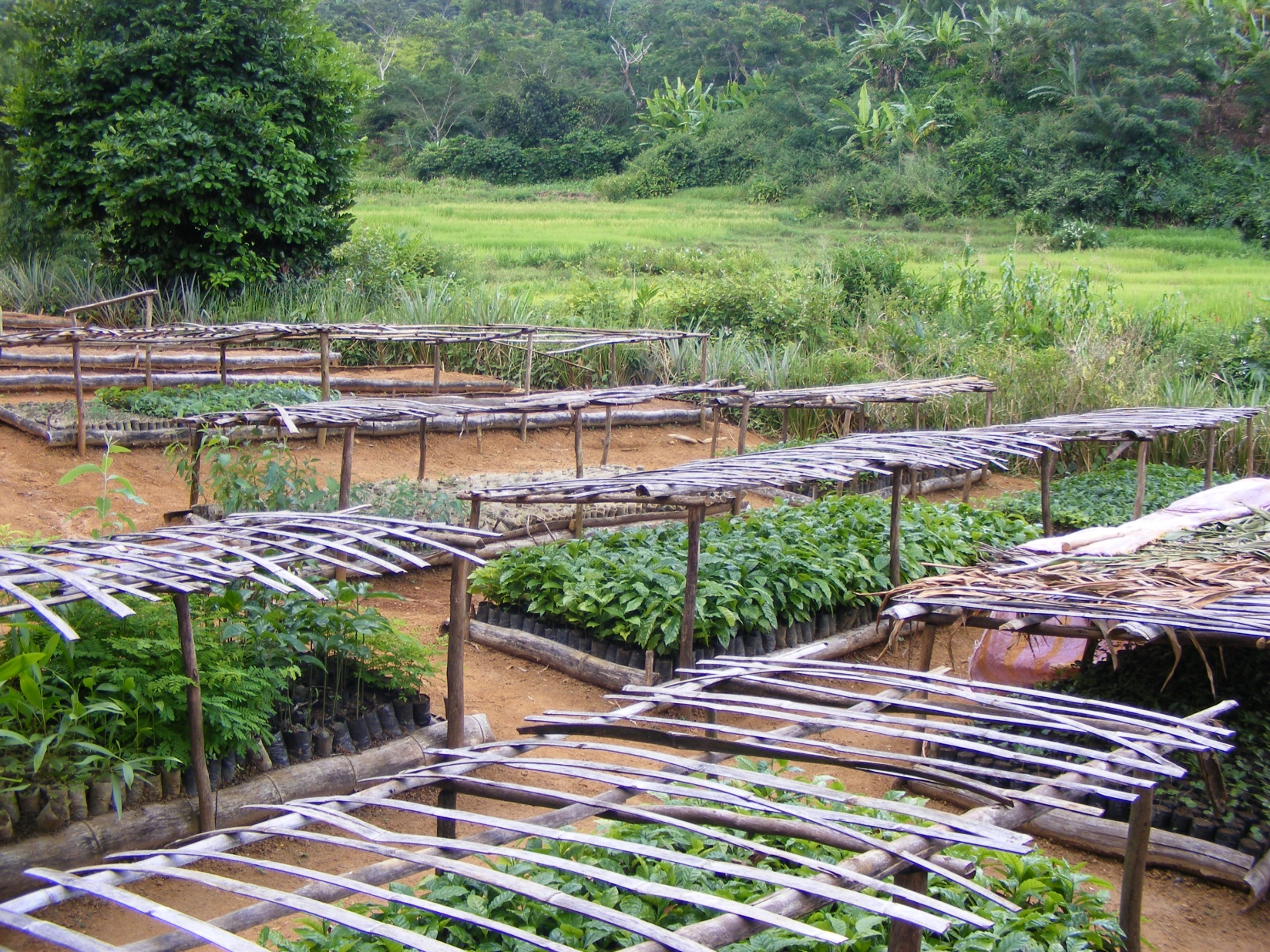
To date, the community has grown and planted over 100,000 seedlings from one of three native species nurseries at Ambalabe
Conservation: We aim to strategize with local populations on how to use their natural resources sustainably so they can become wise stewards of their environment. We work with these communities to develop conservation plans that are both ecologically beneficial and culturally appropriate. We also firmly believe that the preservation of traditional knowledge is a key component in both conservation and sustainability.
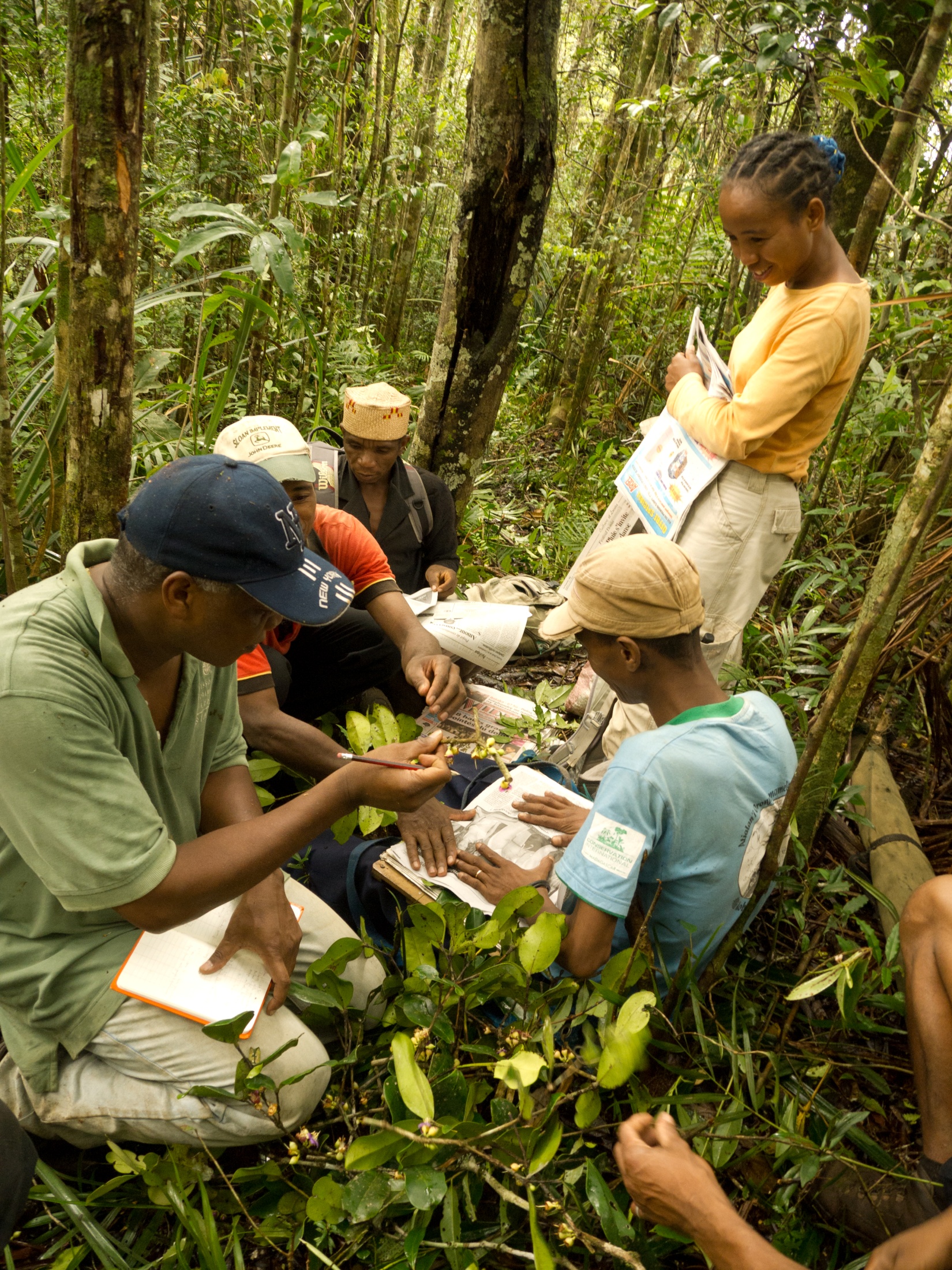
Armand Randrianasolo (left, foreground) works with WLBC-Ambalabe staff to collect and press forest species for scientific study
Scientific research: Ethnobotanical research and inventories add new information and perspectives on the plants of Madagascar. Our research is scientifically rigorous and shared with the world wide community through scientific publications.
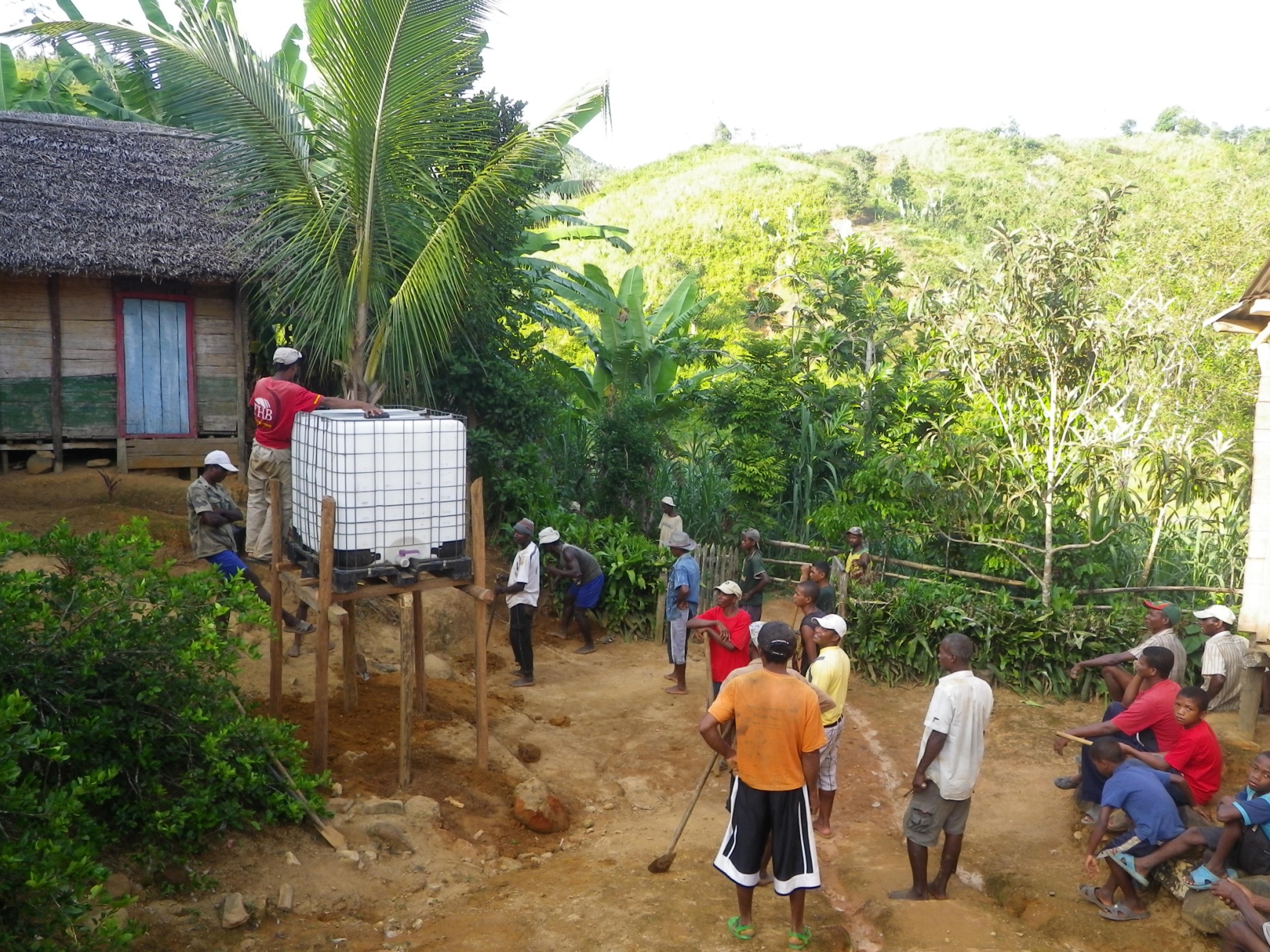
WLBC-Ambalabe staff helps install a water catchment system to bring clean water to the community center
Quality of Life: Improving the living conditions is a fundamental part of the work we do in each community. Our program is based on the belief that in order to permanently solve poverty in biodiversity-rich but economically-poor countries, environmental activities must be linked closely to developmental activities. We also believe an educated, healthy community leads to better decision-making.
The program is a collaborative effort among the William L. Brown Center, MBG’s Africa and Madagascar department, the University of Antananarivo and the Malagasy communities.